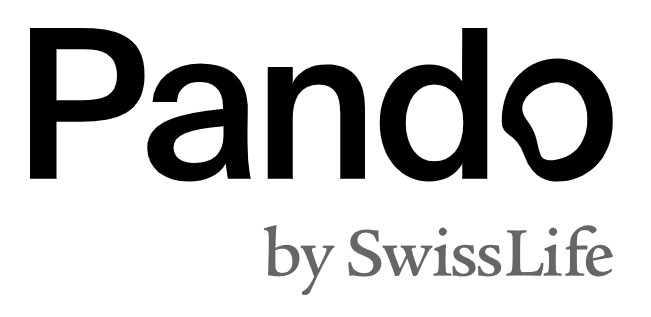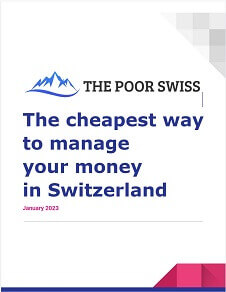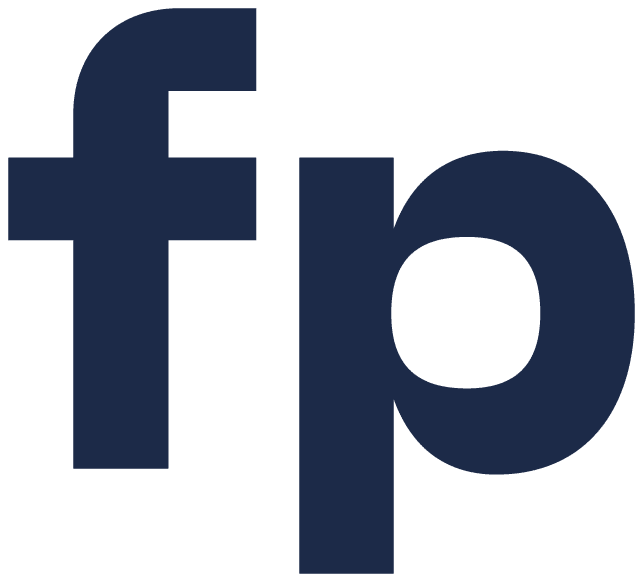Pando 3a by Swiss Life Review 2024 – Pros & Cons
| Updated: |(Disclosure: Some of the links below may be affiliate links)
Pando 3a is a new sustainable third pillar by Swiss Life. Since few of these are available, I thought I would review this service.
Sustainable investing means investing for a better future. For this, some companies are removed from investing, like oil companies. Some companies have been added, like solar power companies.
So, we will examine in detail this new third pillar option: Pando 3a by Swiss Life.
| Total Fee | 0.99% per year |
|---|---|
| Maximum portfolios | 1 |
| Stock allocation | Up to 99% |
| Maximum foreign exposure | 65% |
| Maximum investment in cash | 1% |
| Investment Strategy | ESG ETFs and structured products |
| Fund providers | Swiss Life |
| Languages | English, French, German, and Italian |
| Sustainable option | ESG by default |
| Mobile Application | Yes |
| Web Application | No |
| Custodian Bank | Lienhardt & Partner Privatbank (LPZ) |
| Established | 2022 |
| Foundation’s domicile | Zürich |
Pando 3a – By Swiss Life

Pando 3a is a new third pillar option, opened in 2022 by Swiss Life. As is often the case, this new third pillar is a mobile application. This service focuses solely on sustainable investing and seems to be targeted primarily at young customers.
Swiss Life is a huge financial company with more than 250 billion CHF in assets. It offers life insurance, mortgages, and many retirement options. I have not discussed these on my blog because they are generally costly. So, we will see if Pando 3a is an exception.
Several readers asked me what I thought about this, so here is my in-depth review of Pando 3a.
It is worth mentioning that this third pillar is only available in German now.
Investing Strategy
Pando 3a lets you choose the sustainable topics that you care about. Then, you can choose your equity share. Finally, they will create an investment strategy based on these answers.
Pando 3a invests your money through two types of funds:
- ESG Funds
- Impact Funds
ESG stands for Environmental, Social, and Governance. These ESG funds invest in companies based on these three factors. These funds are available at many fund providers and are popular these days.
Impact funds are special thematic funds by Swiss Life. They currently have three different impact funds:
- Climate Impact: renewable energy and emission-free mobility.
- Environment & Biodiversity Impact: biodiversity.
- Green Buildings & Infrastructure Impact: sustainable construction.
At most, 30% of the portfolio can be invested in impact funds. The rest is invested in ESG funds.
The portfolio that is not allocated to shares is allocated to ESG bonds.
Investing Fees
It is always important to look at the fees of any investing service. Fees are the main lever that investors can use.
Pando 3a has a relatively simple fee system. Swiss Life charges a 0.84% management fee for each investor. You also have to pay the fund costs, which amount to 0.15% per year. So, we have a total fee of 0.99% per year.
The management fee does not include stamp duty and external expenses.
For a 3a, these are costly fees. Compared to the best third pillars in Switzerland, Pando 3a is more than twice as expensive. We will compare later with some alternatives to see the differences.
How sustainable is Pando 3a?
Since this is a sustainable third pillar, we should try to see how sustainable it is.
Pando 3a mainly uses ESG funds. These funds are selected companies based on environmental, social, and governance factors. While ESG funds are more sustainable than standard index funds, they are not perfect:
- ESG funds are not very selective. One example is that Alibaba is part of many ESG funds. However, Alibaba’s business is all but sustainable.
- ESG funds are often focusing only on large companies for financial reasons.
Regarding the Impact funds by Swiss Life, it is more difficult to know how sustainable they are. Swiss Life selects these funds based on their own criteria, and not much information about them is shared on its website.
I would assume that the Impact funds are more sustainable than the ESG funds if Swiss Life performs well. However, they only represent 30% of most of the portfolio.
So, overall, Pando 3a is sustainable but without a definitive sustainability advantage.
Is Pando 3a safe?
We should also look at whether investing in a third pillar is safe.
Third pillar accounts in Switzerland are generally safe and highly regulated. With Pando 3a, the Swiss Life pension foundation holds the assets. The assets are deposited with Lienhardt & Partner Privatbank (LPZ). These assets are segregated from Swiss Life itself.
As far as technical security goes, we do not have much information. There have not been any technical issues reported so far, but since this is a very young service, this does not tell us much. On the other hand, Swiss Life is a well-established company, and I have not found any information about security issues.
Investing with Pando 3a should be as safe as investing with any other 3a.
Alternatives
Finally, we should compare Pando 3a with some of the alternatives.
Pando 3a vs Finpension 3a
Finpension 3a is the best third pillar in Switzerland.
Use the FEYKV5 code to get a fee credit of 25 CHF*!
*(if you deposit 1000 CHF in the first 12 months)
- Invest 99% in stocks
Finpension 3a is currently the best third pillar available in Switzerland. They have the best fees and the best investment strategy.
Finpension 3a also has a sustainable investment strategy that you can choose as an option. For this, these use sustainable funds. It is likely slightly less sustainable, but not by a big margin.
When we compare the fees, Finpension 3a is much cheaper than Pando 3a. Finpension 3a has a 0.39% yearly fee. This makes a huge difference compared to Pando 3a’s 0.99% fee. Finpension 3a will be much cheaper in the long term than.
Finpension 3a is a much better third pillar than Pando 3a. It may be slightly less sustainable, but it is much cheaper.
For more information, you can read my Finpension 3a review.
Pando 3a vs Selma 3a
Selma 3a is the first Robo-Advisor Third Pillar account of Switzerland! You can have a large allocation to stocks (97%!) and invest in a diversified passive portfolio!
Selma 3a is another third pillar, starting as a Robo-advisor and offering a third pillar later.
Selma 3a also offers sustainable investing in the form of ESG and SRI funds as an option. Selma 3a is slightly less sustainable than Pando 3a since they do not have impact funds. However, it will not make a massive difference in the long term.
In terms of fees, Selma 3a is slightly cheaper than Pando 3a, at 0.90% per year, against 0.99% per year. This is a significant difference but not life-changing. However, if you have more than 50K CHF in your account, your fees will decrease to 0.83%. This level of fee starts to be interesting.
So, despite the lower sustainability, I would still recommend Selma 3a over Pando 3a for the lower fees.
I have a full review of Selma 3a if you need more information.
Pando 3a vs Inyova 3a
A good third pillar account, with a strong focus on impact investing and sustainable investments.
- Highly sustainable
- Fairly priced
Inyova 3a is a very sustainable third pillar. Inyova started a robo-advisor and introduced its third pillar. They are heavily focusing on sustainability. Inyova only offers sustainable investments.
Regarding sustainability, Inyova 3a can be significantly more sustainable than Pando 3a. Indeed, they choose all the shares and are very specific about their investment. Their idea is to optimize the impact of each investment.
Regarding fees, Inyova 3a is cheaper, with a 0.80% fee per year compared to 0.99%.
For me, Inyova 3a has only advantages over Pando 3a. It is more sustainable and cheaper.
You can read more about them in my Inyova Review.
Pando 3a FAQ
How expensive is Pando 3a?
Pando 3a's yearly management fee is 0.99%.
How much can you allocate in stockss with Pando 3a?
You can allocate up to 100% in stocks.
How much can you allocate in Pando 3a's impact funds?
You can invest at most 30% in Pando 3a's impact fund.
Who is Pando 3a good for?
Pando 3a is not good, unless you are forced to use Swiss Life products.
Who is Pando 3a not good for?
Pando 3a is not good if you are looking for cheap third pillar with good features. It is also not good if you are looking for a very sustainable third pillar. In both cases, there are better alternatives.
Summary

Pando 3a is a sustainable third pillar by Swiss Life.
Product Brand: Swiss Life
2.5
Pando 3a Pros
Let's summarize the main advantages of Pando 3a:
- Well-established company
- Relatively sustainable
- Safe
- High investment in stocks
Pando 3a Cons
Let's summarize the main disadvantages of Pando 3a:
- Way too expensive
- Sustainable, but not extremely so
- Only available in German
- Relatively poor reputation
Conclusion
Overall, I think that Pando 3a is not a good third pillar. It is expensive and not particularly sustainable.
Compared to alternatives, it is significantly more expensive. Also, compared to the most sustainable third pillar, it is less sustainable. I do not find any advantage to this service.
Until now, I have only tried reviewing excellent services, but this service is probably an exception because it is not excellent. So, do you think I should try to review more services or simply focus on the best ones?
If you are looking for a great third pillar, I encourage you to look at the best third pillar.
What about you? What do you think about Pando 3a?
Download this e-book and optimize your finances and save money by using the best financial services available in Switzerland!
Download The FREE e-bookRecommended reading
- More articles about Best retirement accounts
- More articles about Retirement
- How to Open a VIAC Third Pillar in a Few Easy Steps
- Inyova 3a Review 2024 – Pros & Cons
- Freya 3a Review (Discontinued) 2024 – Pros & Cons




Hello,
Thank you for the article. I believe it could be beneficial to explain the fee structure for Inyova because there are important factors to take in.
As explained in your second article, they have a decreasing fee system:
Under 50k fees: 1.2%
50k-150k fees: 1%
150-500k fees: 0.8%
Over 500k fees: 0.6%
The 3A pillar can take 7056.- maximum per year meaning you’d spend 7 years paying higher fees and 16 years paying equal fees (total 21 years) assuming you’d place all your 3A funds here.
I don’t believe anyone/many people would invest all their 3A in ESG/impact fund therefore we can assume it would take many more years to have over 150k in the account and therefore benefit from « lower » rates.
Strategically, it wouldn’t make sense to place all your 3A funds in only ESG/impact funds because they don’t have very interesting ROIs (for the moment) which brings me to believe that even if someone place 1/3 (7056/3=2352.-) of their funds with Inyova, it would take them 63 years to reach 150k and benefit from the lower rates.
What do you think?
Hi Yohann,
I am not sure I understand your point. It’s true that Inyova has a decreasing price system. However, the Inyova 3a has a fixed fee of 0.80%, nothing decreasing.
Thanks for the article, Baptiste.
Regarding your question: While I share the notion that the focus should be on the best, in your review of the best (finpension, VIAC, etc) I have missed a stronger focus on the sustainability aspect a bit. I recognize sustainability is not a priority criteria for everyone, but all too often it is -IMHO- merely treated as a “nice to have”.
Maybe this serves as a confirmation that you do have readers, and there are investors out there, with a genuine interest in investing impactful and sustainably and that in your analysis you needn’t shy away from giving the topic some weight.
What cost each investor is willing to pay for sustainability is an individual decision. In this case I agree I do not see how sustainability needs to charge more than double than the most competitive.
Many thanks again
Hi Eric,
Thanks a lot for your feedback! This is very valuable!
This reminds me that I should do a full review of Inyova 3a, likely the only really sustainable option available.
Do you think I should expand on my sustainability analysis of Finpension/VIAC and others?
Thanks for your reply, Baptiste.
To your question: I’m not sure it is worth going back to the previous analyses of Finpension/VIAC to add a sustainability section, but I would include it for future reviews.
Makes sense, I will integrate more of these sections in the future. Thanks for the feedback!
Hi Baptiste,
I would find it interesting to include a sustainability section in your review of finpension and Viac. I choose the sustainable global 3a of viac over the one sustainable of finpension because I could find more information about Viac excluding some sectors and some companies (not only best in class) but not for finpension. It would be interesting to see if you come to same conclusion or not.
I’ll also open a second 3a in inyova as I’m ready to pay a bit more for better sustainability products.
Thanks a lot for your blog.
Hi Théo,
That’s a good idea if people want to read it. I will add it to my to-do list. I do not remember any differences between both, so I will have to check again!
Interestingly, I will have a review of Inyova 3a next month. If you have any feedback, let me know!
Thank you for this review Baptiste.
But as you ask, I would say only the best one :)
Thanks for your feedback Dror, noted.
Have you seen that since January 1st Viac lets you invest 99% in stocks? Up from previous 97%, and the switch is automatic.
I have seen that, but what does it have to do with this article? I haven’t even mentioned VIAC in this article.